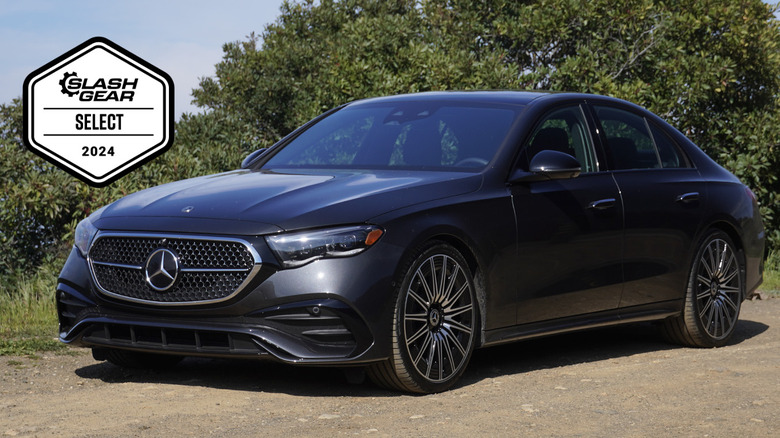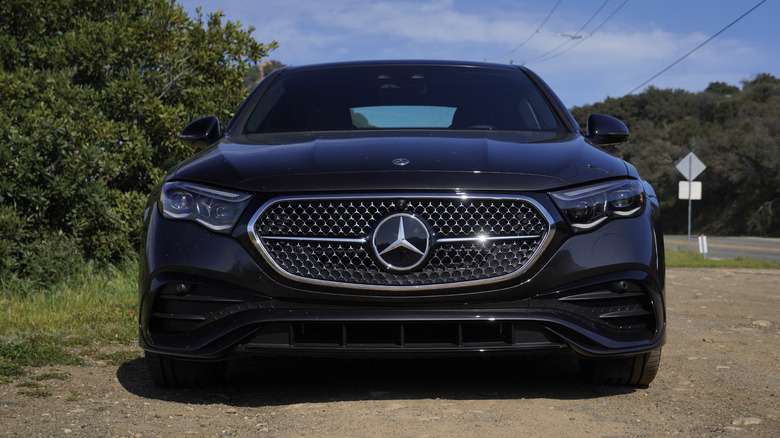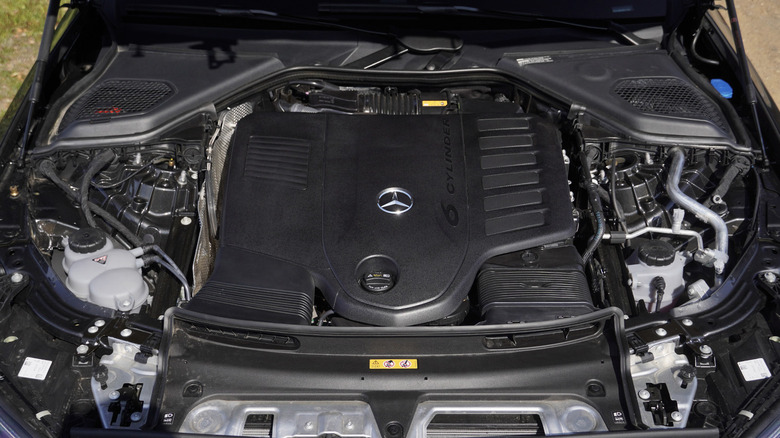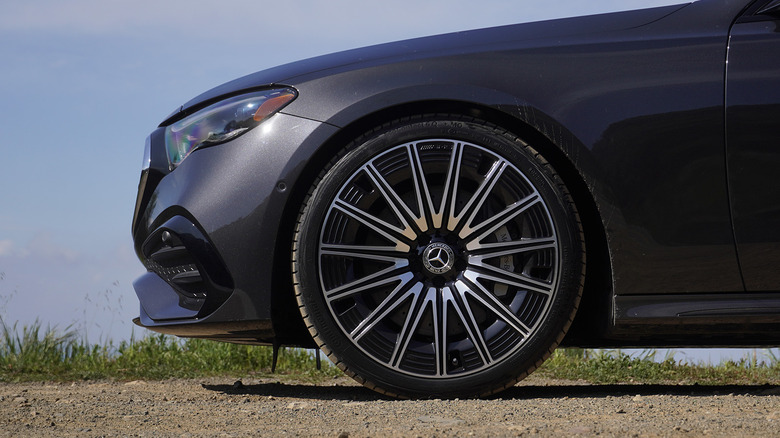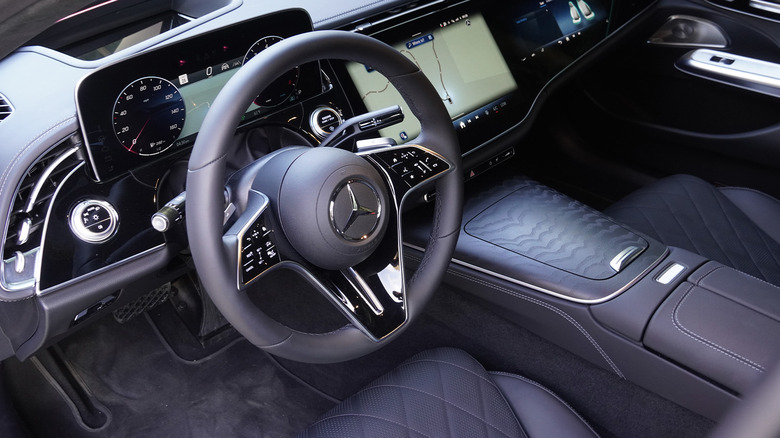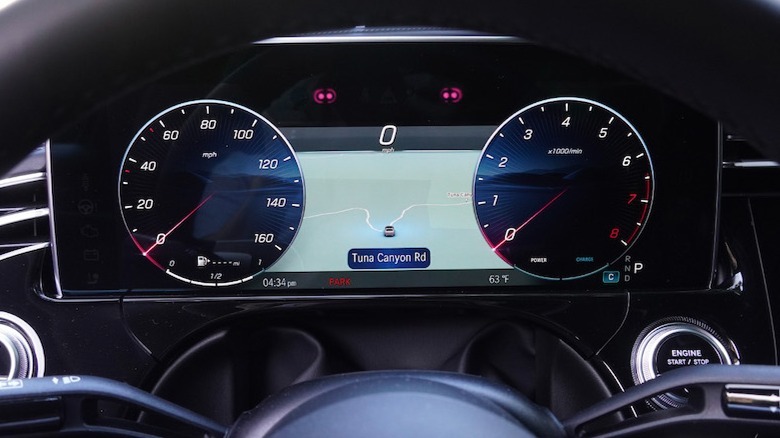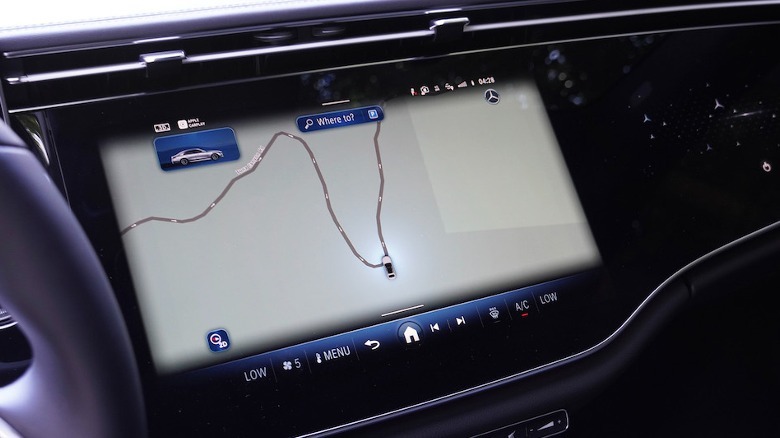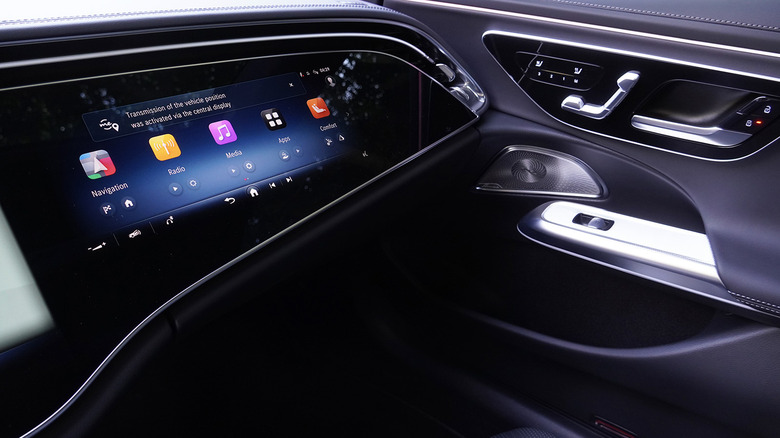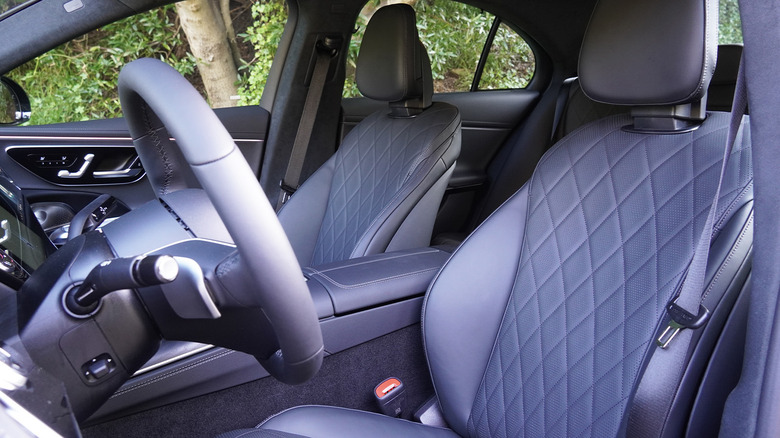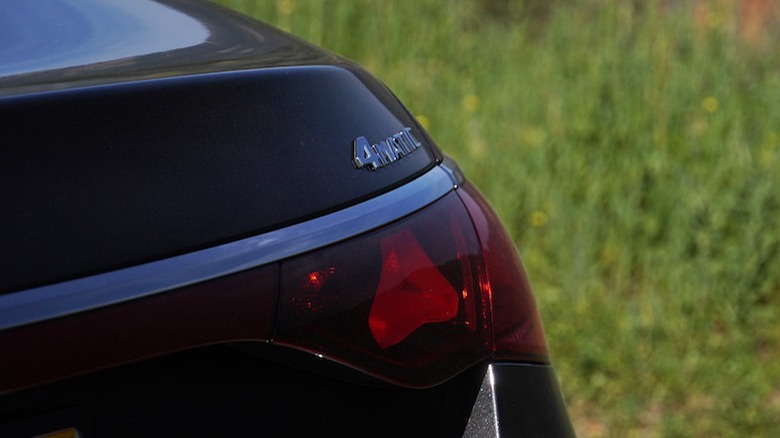2024 Mercedes-Benz E 450 4Matic Review: Subtle Sedan Meets Loud Tech
- Power and refinement from a hybridized inline-six
- Ultimate comfort and serenity
- Starting price is surprisingly reasonable
- Tech updates tend to intrude aggressively
- Befuddling climate control settings
- Options add up fast
For model year 2024, the staid Mercedes-Benz E-Class receives a complete overhaul that signals the introduction of an all-new generation, the storied sedan's 11th for those who keep track of such things. A few understated exterior cues hint at an updated drivetrain matched by an interior that takes big steps into the modern era, with more opulence and more style.
But the biggest story for the E-Class comes down to technology, highlighted by the addition of a 48-volt mild hybrid system that now comes standard on all powertrains and trims. And we know Mercedes loves to stimulate the senses with ambient lights and even subtle smells, but the new generation takes the situation to a whole 'nother level with some of the most extensive tech features of any vehicle on the market.
Elegant exterior improvements for the 11th-gen E-Class
From more than 15 feet away, only diehard M-B fans will be able to tell the 11th gen apart from its predecessors. Seemingly effortless lines flow from the revamped grille up front, which features tri-point logos, then aerodynamically over the long hood and side panels all the way to a narrow light bar at the tail.
Pulling open the textural door handles — which, as on the EQE electric sedan, automatically pop out and retract — reveals a calm and coherent interior replete with quilted leather, exposed wood trim, and patterned aluminum. A few details, including the seashell pattern of the upholstery, lean towards the more nautical theme of the EQ lineup, but overall the aesthetic builds on design cues that made the GLC SUV so sumptuous.
The seats themselves live right up to Mercedes levels of comfort, though as new on the firmer side, may need some time to break in and soften up, including the fore and aft-adjustable headrests. Throughout, plenty of headroom, legroom, and even the often-overlooked volume for elbows to spread out onto armrests make the E-Class easy to relax within. And the trunk only loses a few cubic feet of volume versus the outgoing gen, despite all the additional accouterments.
A big sedan that drives small
Speccing an E 450 4Matic adds more power and all-wheel drive, thanks to the 48-volt hybrid assist system that furthers bolsters the typically smooth performance of a 3.0-liter turbocharged inline-six. The mill pushes up to 22 PSI of boost and adds a pair of extra cylinders versus the lower-spec E 350, resulting in peak output of 375 horsepower and 369 lb-ft of torque (of which the electric motor contributes up to 23 horsepower and 148 lb-ft). While Mercedes has a plug-in hybrid version of the new E-Class, it's not being brought to the U.S.
All the E-Classes employ the same nine-speed automatic gearbox, which helps to keep the hybridized engine in its happy place while either cruising or pushing hard. For the E 450, the many gear ratios mean that once peak torque hits as low as 1,800 RPM, further exploration into the deeper reaches of throttle pedal travel can either result in gearshifts or the generous feeling of spooling turbo pressure depending on drive modes. Though ample, the sensation still surges as revs climb higher—in decidedly opposite fashion of so many turbo engines controlled by electronic wastegates to flatten out power delivery.
Steering and suspension combine perfectly
Altogether, tuning the engine to work with an electric motor results in a 0-60 time half a second quicker than the previous generation, at 4.4 seconds. And that's despite a curb weight of 4,376 pounds, or about a 5% increase. As usual, the E-Class's chassis setup helps to make such abundant power seem absolutely effortless, as the optional Airmatic suspension system contributes to the unavoidable conclusion that nothing this big and heavy should drive so well.
Part of the deft performance comes down to light steering that can firm up with Sport mode selected, while working in concert with rear-axle steering (which can produce a few strange moments of discernible wiggle at first, but starts to feel normal surprisingly quickly). At low speeds, the system turns the rear wheels up to 4.5 degrees in the opposite direction to those at the front, to reduce the turning radius by about 10%.
As helpful as that can be while negotiating tight streets or parking lots, the difference out ripping up canyons at speed—where the rear wheels turn in the same direction as the fronts—actually stands out as most noticeable given that such wizardry more typically fades into minimal effectiveness on other cars. The brakes, meanwhile, might manage the line of modulation between true pad bite and regeneration better than any other hybrid ever.
When tech attacks
As well as the powertrain and chassis meld together traditional ICE refinement with high-tech electric efficiency to produce stellar driving dynamics in sheer performance terms, the main generational differences that most drivers will notice before even touching the accelerator pedal involve how substantially technology affects the entire E-Class experience. The enormous dash, in this case equipped with the SuperScreen option that includes three distinct digital screens, simply boggles the mind. The passenger screen alone measures 12.3 inches diagonally—that's bigger than many center console infotainment touchscreens on the market today.
For the driver's cluster, more sensitive eyeballs (and brains) may opt to turn off the holographic 3D display for navigation and gauge readouts—an easy task via only a couple of taps on the main central touchscreen. But otherwise, navigating through 'Benz's updated third-gen MBUX that debuts on the E-Class can get quite frustrating. Selecting the "Home" icon, for example, takes the screen back to the navigation page first, before a second tap actually pulls up the home screen (makes sense, right?). Apple CarPlay, supported wirelessly or wired, can take more than a few exploratory menus to locate—or via a tiny icon that pops up at the top-left of the navigation screen. And that camera above the dash allows for selfies, video conferencing apps, and even TikTok. Using third-party apps largely requires parking the car, but is this truly necessary, not to mention a good thing?
The screens themselves sit within a fairly pleasing dash design, largely because suborning so many systems to digital selection necessarily reduces visual clutter. Still, the extent of piano black plastic trim surround piecess and on what few buttons remain then becomes something of a bummer—especially for the tiny strip of physical switchgear almost hidden below the central screen.
Some bright spots in amid the onslaught
Good luck figuring out the climate controls, too, which use quick-selection widgets at the bottom of the main screen but also a dedicated menu available as a pop-up. Despite what seems like relatively simple selections for fan speed, vent location, temperature, and auto settings, none of the above appear to correlate with the air that actually comes out of the dash. On a hot day in the Southern California sun, the system regularly turned off completely before deciding to switch to full ice bath, then fed only the defroster or foot vents for a bit, all while not in Auto mode, nor attributable to the "Energizing Air Control" option, which only adds extra filtration.
Some of the tech actually turned out kind of nifty, in all fairness. At first, with music streaming over CarPlay, the vibrations in time with bass notes (Mercedes calls them "exciters") seemed similar to movie theater gimmicks. But allowing some sound waves to flow through the upholstery begins to fade quickly into the arena of non-conscious acceptance and eventually amplifies the Burmeister and Dolby audio system. Haptic buttons, expanding across the 'Benz lineup, also require only a moment's adjustment period before becoming all-too-natural (other than the borderline obscene stroke required to retract the sunroof shades). And extra USB-C outlets next to large hidden cupholders beneath the grain of black ash wood help, too.
Bridging the gap between generations
Any experienced 'Benz owners already know to never utter the word "Mercedes" within an actual Mercedes, for fear of bringing the voice-controlled Interior Assistant to life. And the new MBUX continues to ding and beep and chime almost incessantly. But this 11th generation proves itself a poster child for the recent news out of Europe that regulators want to nudge automakers back toward physical switchgear. The E-Class was likely too far along in its development timeline to take a step "back" from the technological brink. Hopefully, the AI software that 'Benz boasts will learn driver preferences will actually do so, allowing owners to simply get in and drive this luxury sedan that drives so well, all without the potentially inhibiting effects of technology entering the picture at all.
For better or worse, millennials who grew up on computers, then tablets, and now live on smartphones may still find the 11th-gen E-Class somewhat overwhelmingly technologized. Whether Mercedes-Benz intends for those buyers, perhaps now enjoying some disposable income, to shell out the $62,300 starting price for a 2024 E 350–or the extra six grand for a bigger engine–remains something of a quandary, given the E's more traditional positioning that leaned undeniably toward a slightly older buyer.
